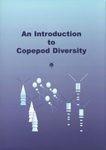About this book
Crustacean Nervous Systems and Their Control of Behavior is the third volume of the series The Natural History of the Crustacea. This volume is on the functional organization of crustacean nervous systems, and how those nervous systems produce behavior. It complements other volumes on related topics of feeding biology, reproductive biology, endocrine systems, and behavioral ecology. There is a rich history of the study of the neurobiology of crustaceans, going back over 150 years. This has included studies on how their nervous systems allow them to perform behaviors that are adapted to their particular environments, as well as studying them as model organisms to understand basic biomedical principles about neural function, such as sensory transduction and processing, synaptic transmission and integration, neuromodulation, and learning and memory.
Crustacean Nervous Systems and Their Control of Behavior has three sections that build progressively on each other. The first section is on the basic organizational features of the crustacean nervous system and the principles upon which it is built. The second section is on sensory ecology – the organization of each sensory system and how it is used in intra- and interspecific interactions, within an ecological context. The third section uses case studies of how crustacean nervous systems are organized to perform complex behaviors and interactions, such as walking, escape, social interactions, and memory and learning. Taken together, the 20 chapters synthesize our modern understanding of the neural control of behavior in crustaceans, based on the most recent technologies in physiological recording, molecular biology, and computational science. This volume will be useful to students and researchers as a concise summary of current knowledge of crustacean neuroscience.
Contents
Chapter 1. Crustacean Nervous Systems and their Control of Behavior - An Introduction
Charles Derby and Martin Thiel
Chapter 2. Adaptive Trends in Malacostracan Brain Form and Function Related to Behavior
David C. Sandeman, Matthes Kenning, and Steffen Harzsch
Chapter 3. Sensory Systems of Crustaceans
DeForest Mellon
Chapter 4. Peripheral Components of Crustacean Motor Systems
Harold Atwood
Chapter 5. Modulation of Crustacean Networks for Behavior
Ronald Harris-Warrick
Chapter 6. Synapses in Crustaceans
Gregory Lnenicka
Chapter 7. Adult Neurogenesis in Crustaceans
Manfred Schmidt
Chapter 8. Visual Systems of Crustaceans
Raymon Glantz
Chapter 9. Sensory Ecology of Vision in Crustaceans
Thomas W. Cronin and Kathryn D. Feller
Chapter 10. The Chemical Senses and Chemosensory Ecology of Crustaceans
Charles D. Derby and Marc J. Weissburg
Chapter 11. Mechanoreception in Crustaceans of the Pelagic Realm
Petra H. Lenz and Daniel K. Hartline
Chapter 12. The Geomagnetic Sense of Crustaceans and its Use in Orientation and Navigation
Kenneth J. Lohmann and David A. Ernst
Chapter 13. The Crustacean Stomatogastric Nervous System
Eve Marder, Marie L. Goeritz, Gabrielle J. Gutierrez, Albert Hamood, Ted Brookings, Jonathan Caplan, Sara Haddad, Tilman Kispersky, and Sonal Shruti
Chapter 14. Neural Control of Posture and Walking in Crustaceans
Daniel Cattaert
Chapter 15. The Escape Behavior of Crayfish
Franklin B. Krasne, William J. Heitler, and Donald H. Edwards
Chapter 16. Biological Rhythms and their Neural Basis in Crustaceans
María Luisa Fanjul-Moles
Chapter 17. Neurobiology of Social Status in Crustaceans
Jens Herberholz
Chapter 18. Path Integration, Vision, and Decision-Making in Fiddler Crabs
Jochen Zeil and Jan M. Hemmi
Chapter 19. Neurobiology of Learning and Memory of Crustaceans
Daniel Tomsic and Héctor Maldonado
Chapter 20. Crustaceans as Model Systems for Teaching Neuroscience: Past, Present, and Future
Bruce R. Johnson, Robert A. Wyttenbach, and Ronald R. Hoy
Customer Reviews
Biography
Martin Thiel is a marine biologist with strong interests in animal behavior and natural history. During the past 20 years, he has conducted studies on crustacean behavior ranging from evolution of parental care behaviors to mating interactions and anti-predator behaviors. He is also interested in dispersal ecology and biogeography, and in promoting the participation of citizen scientists in marine research.
Charles Derby is a Regents Professor of Neuroscience and Biology at Georgia State University who studies how animals use sensory information in solving life's challenges, such as finding high-quality food, identifying mates, and avoiding predators. His focus has been the chemical senses of decapod crustaceans, especially spiny lobsters, clawes lobsters, and brachyuran crabs.











































